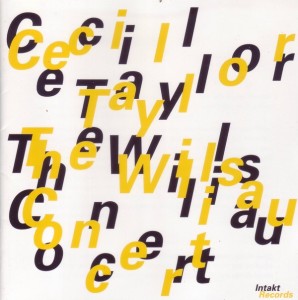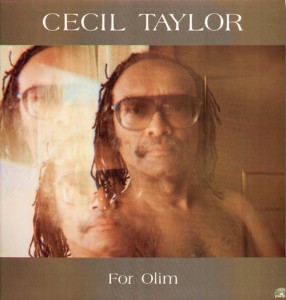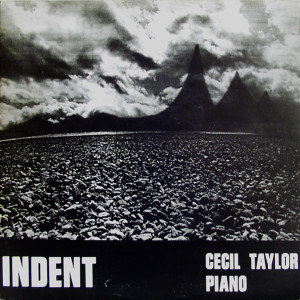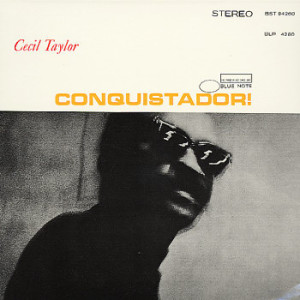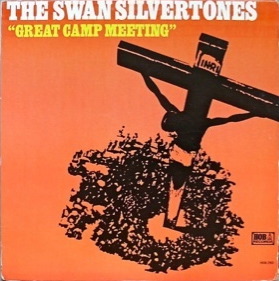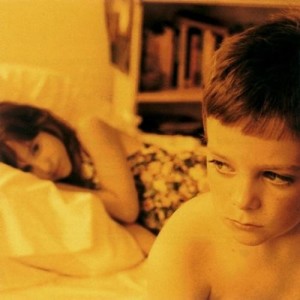“I Am the Real Nick Cave” by John Wray in NYT
Category: Music
Jim O’Rourke – Insignificance
Jim O’Rourke – Insignificance Drag City dc202cd (2001)
I’m not entirely sure why, but somehow Insignificance seems to be one of the great albums of its age. As a lyricist O’Rourke may not be Bob Dylan, even if most of the time he’s channeling the same mean spirit that populates “Positively Fourth Street” or Blood on the Tracks. He’s also probably not anyone’s idea of a charismatic singer. But pairing the underachieving, utter non-event of the words and vocals with the the nuanced, finely orchestrated — yet still hard driving — instrumentals and arrangements is a masterstroke of genius. Dylan carried the soul of the Beat generation to someplace new. O’Rourke carried the angst of alternative and indie rock to its pointedly ironic pinnacle. This music has an empty sophistication and sense of aimlessness that mark it as something totally representative of its time. I find the fact that it’s somewhat unnoticed to be all the more a hallmark of the diffuseness of everything it stands for.
Cecil Taylor – The Willisau Concert
Cecil Taylor – The Willisau Concert Intakt Records CD 072 (2002)
Quite possibly the most high-fidelity Cecil Taylor solo piano recording in existence. It would be hard to find another artist as deserving of such attention to detail. The performance is quite excellent too. The speed, percussive force, and density of the music provide an intensity that is very nearly that of Taylor’s monumental 1970s recordings Silent Tongues and Indent, despite his advancing years. It’s so great to see someone as boldly daring and iconoclastic as Taylor still able to keep making music like this, and for music that has changed so little over the years to still sound so fresh. It goes to show that with enough conviction the power of statements like this almost never fades.
Cecil Taylor – For Olim
Cecil Taylor – For Olim Soul Note SN 1150 (1987)
Taylor continued to expand his palette on this mid-1980s solo outing. Although known as an innovator for approaching modern jazz from a background in modern classical, here he incorporates a few R&B influences. Good stuff, though newcomers should probably start with his 1970s solo outings first.
Cecil Taylor – One Too Many Salty Swift and Not Goodbye
Cecil Taylor – One too Many Salty Swift and Not Goodbye HatHut 3R02 (1980)
It’s not often that Cecil Taylor is outdone, but I think his band outdoes him here. The duets and drum solo that open the album are the highlights for me, though the rest ain’t too shabby either.
Cecil Taylor – Cecil Taylor All Stars Featuring Buell Niedlinger
Cecil Taylor – Cecil Taylor All Stars Featuring Buell Niedlinger CBS/Sony SONF01107 (1974)
A grab bag of stuff that doesn’t seem to belong together on one album. But it’s interesting nonetheless. “Jumpin’ Punkins” is the most intriguing because it’s a full-on Ellingtonian piece, and Taylor plays strange yet oddly fitting comping.
Cecil Taylor – Indent
Cecil Taylor – Indent Unit Core 30555 (1973)
Cecil Taylor solo, live, in peak form. Similar to Silent Tongues, and though Silent Tongues may be the better of the two, this one is fantastic nonetheless. Cecil’s playing is more precise and focused here, though on the other it is more dynamic. I recommend both.
Cecil Taylor – Conquistador!
Cecil Taylor – Conquistador! Blue Note BST 84260 (1968)
Good, especially the title track, but hardly anything that unique among mid-1960s free jazz. I’m tempted to call this a “mainstream” free jazz album. But that would be absurd, an unpardonable oxymoron.
The Swan Silvertones – Great Camp Meeting
The Swan Silvertones – Great Camp Meeting HOB HOB290 (1968)
The Swan Silvertones’ over five decade existence can be broken down into about four periods. The first period is their early period from formation in 1938 through 1951, roughly encompassing their time recording for King Records, when they were searching to find their style beyond “jubilee” gospel. During this time they didn’t really have a sympathetic record label to record them, so today we have to just guess what they would have sounded like live. Some surviving notes suggest that the band was holding some of their better material and arrangements in reserve until they found a more willing label to record them. Nonetheless, they had some mild success in this early period, but probably not a tremendous amount on a national scale. The second period is 1951 through the later years of the 1950s. I consider this the classic period of the Swans, when they firmly established their own unique style of “hard gospel”. They were recording for Specialty Records. While Specialty gave them essentially complete creative control in picking arrangements and songs, it seems Specialty didn’t do that much for the group in terms of promoting them and releasing in a timely fashion what had been recorded. During this time they recorded some all-time greats. While I think the group was gaining a reputation, they probably weren’t getting as much exposure through their recordings as they deserved. The third period, and the one that probably brought the group the most commercial success, was when they moved to Vee-Jay records at the end of the 1950s. On Vee-Jay, they added instrumental backing for more or less the first time — previous recordings were mostly a cappella and generally included only minimal percussion accompaniment. They also were releasing full-length LPs of new material for the first time. In this phase, the group was expanding upon the stylistic ideas they had previously developed. Things were going very well, but then Vee-Jay closed down in 1965. They switched over to HOB records, but the group’s long-time leader Rev. Claude Jeter left in 1966. The group continued though. They recorded more for HOB. Starting in 1968, HOB albums were distributed by Scepter Records, but Scepter shut down in 1976 at which time the group switched over to record material for Savoy Records, with longtime manager John Myles departing. In these later years, particularly on Savoy when Louis Johnson took over leadership of the group, they had what has been described as a “seventies gospel” style. This post-Vee-Jay period is the fourth and final period of The Swans’ existence — though the Savoy years could perhaps be viewed separate from the HOB years. Finding albums from this last period can be incredibly difficult, as even discographies covering this period can be hard to find, much less copies of the LPs, most of which have never been re-released on CD in full as of this writing. If anything, the band kept moving in a direction that bore little connection to any of their earlier periods. In some respects, this is the least rewarding period, and that probably goes a long way towards explaining the lack of reissues and willful amnesia among fans and critics. I don’t want to make this period sound like it’s consistently terrible, because these recordings were still well-crafted, just not always very stylistically rich or ambitious. Claude Jeter supposedly came back a few times through the 1980s and early 1990s for live appearances.
That brings me to Great Camp Meeting. This was released on HOB records originally, and did manage to earn a CD reissue. The album represents the peak of the increasingly rock and soul oriented sound the group first suggested with Blessed Assurance and continued into the 1970s with generally diminishing results. When Rev. Claude Jeter left the group, he was replaced by essentially an imitator in new lead singer Carl Davis. It seems like Davis is present on material here like “Little Wooden Church,” where his vocal similarity to Jeter is striking. However, it’s clear that the group is under new leadership (with John Myles in control). A lot of the material here also seems less elaborate than Swan Silvertones recordings from just a few years earlier. The best stuff on the album tends to be the songs with simple, up-tempo instrumentals and Louis Johnson clearly taking the lead on vocals, with his voice swinging back and forth between gravelly shouting and smoother crooning. “Can’t Do Nothing” is one of those, with one of the most grooving, driving beats you’ll find anywhere in The Swans’ catalog. It’s probably my favorite cut from the post-Jeter era. The version of “This Little Light of Mine” here is also really propulsive, one of the best versions of the songs I’ve yet heard, with an intense beat that shows clear signs that soul music was a vital force in popular music at the time. Also really good here are a few of the songs like “It’s Good to Be Saved” with Johnson slowly sermonizing over driving backing harmonies, and “Stand Up and Testify” with Paul Owens delivering some slow, jazzed-out lead vocals.
The kind of offhand, inviting, casual feel of so much of this stuff has really hooked me. There is plenty of good stuff here, and what makes it good is a world apart from what made earlier Swan Silvertones albums good. This may be my favorite Swan Silvertones album of the post-Vee-Jay years, and it might just be one of the group’s best albums period. It feels just a little rough around the edges, but that’s exactly what I like about it.
The Afghan Whigs – Gentlemen
The Afghan Whigs – Gentlemen Elektra 9 61501-2 (1993)
Back in the early 1990s heyday of “grunge” and “alternative rock” that cracked into mainstream airplay, The Afghan Whigs were in the cadre of the most well-known rock bands. Gentlemen was ubiquitous. I must admit to having known about it, but never bothering with it until a full two decades later. Looking back at it, I can’t really say this is my thing. The subject matter inhabits a place that seems a little too juvenile for me to relate to today, but I can still respect what the group achieves here. Greg Dulli’s vocals achieve a kind of burning torment that encapsulates much of what they were about. Yet the group’s real strength was how they blended together so much of what was in the air at the time. The iconoclastic jazz musician and composer Anthony Braxton has theorized that there are three types of musicians: restructuralists (who come up with new ways of thinking), stylists (who expand upon the restructuralists’ new ways of thinking), and traditionalists (who operate within a defined space). By that account The Afghan Whigs were stylists. Frankly, they weren’t the most proficient musicians by this evidence. But bits of this recall everything from alternative hard rock (Smashing Pumpkins), to Seattle grunge (Nirvana, Pearl Jam), to lo-fi rock (Pavement, Dinosaur Jr.), to funky party rock (Red Hot Chili Peppers), to britpop (Pulp, Suede, Blur). They even occasionally adopt the kind of off-key vocals that would come to dominate “indie rock” a decade later. The result comes across like more than the sum of its parts, just because it seems to carry on from beginning to end without ever running out of new bits and pieces to assimilate. This may be a period piece of sorts, but it’s one that perhaps endures because of a slight sense that it’s hardly more than a garage rock experiment that worked out in spite of the odds.


